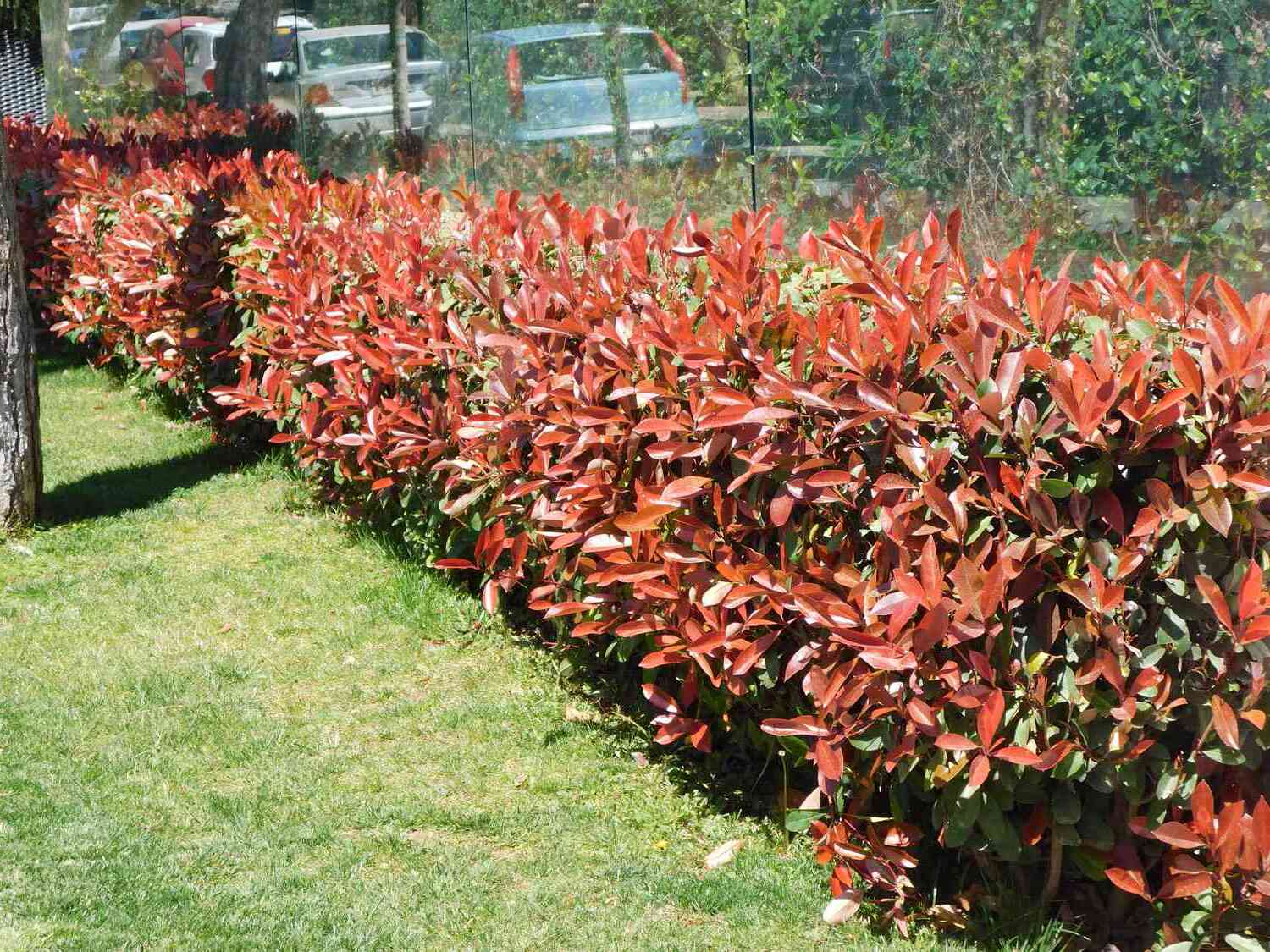
Photinia is a popular plant known for its vibrant red leaves and versatility in landscaping. But did you know there’s much more to this shrub than meets the eye? Photinia belongs to the rose family, Rosaceae, and thrives in various climates, making it a favorite among gardeners. These plants can grow up to 15 feet tall, providing excellent privacy screens or hedges. They are also relatively low-maintenance, requiring only occasional pruning to keep their shape. Interestingly, Photinia can produce small white flowers in spring, followed by red berries in the fall. Whether you’re a seasoned gardener or just starting, understanding the unique characteristics of Photinia can help you make the most of this versatile plant in your garden.
What is Photinia?
Photinia is a genus of shrubs and small trees in the Rosaceae family. Known for their vibrant red leaves and white flowers, these plants are popular in gardens and landscapes. Let's dive into some fascinating facts about Photinia.
General Facts About Photinia
Photinia plants have unique characteristics that make them stand out. Here are some general facts to get you acquainted with this beautiful plant.
- Photinia is native to Asia, particularly in regions like India, Japan, and Thailand.
- The name "Photinia" comes from the Greek word "photeinos," meaning shiny, referring to the glossy leaves.
- There are over 60 species of Photinia, each with its own unique features.
- These plants can grow as either shrubs or small trees, reaching heights of up to 15 feet.
- Photinia is evergreen, meaning it retains its leaves throughout the year.
Unique Features of Photinia Leaves
The leaves of Photinia are one of its most striking features. They add a splash of color to any garden.
- New leaves of Photinia are bright red, which gradually turn green as they mature.
- The leaves are oval-shaped and can grow up to 5 inches long.
- Photinia leaves are known for their glossy texture, which makes them appear shiny.
- In some species, the leaves can change color multiple times throughout the year.
- The red color of the new leaves is due to anthocyanins, pigments that protect the plant from UV light.
Flowering and Fruiting
Photinia plants are not just about the leaves; their flowers and fruits are equally interesting.
- Photinia produces clusters of small, white flowers in the spring.
- The flowers have a mild, pleasant fragrance that attracts pollinators like bees and butterflies.
- After flowering, Photinia produces small, red or black berries.
- These berries are a favorite food for birds, which help in seed dispersal.
- The berries are not typically consumed by humans due to their bitter taste.
Growing Conditions and Care
Photinia is relatively easy to grow, but it does have some specific requirements to thrive.
- Photinia prefers well-drained soil and can tolerate a range of soil types.
- It thrives in full sun to partial shade, making it versatile for different garden settings.
- Regular pruning is essential to maintain the plant's shape and encourage new growth.
- Photinia is drought-tolerant once established but benefits from regular watering during dry periods.
- It is relatively resistant to pests but can be susceptible to leaf spot diseases.
Uses of Photinia
Photinia is not just a pretty face; it has practical uses as well.
- Photinia is commonly used as a hedge or privacy screen due to its dense foliage.
- It can be shaped into various forms, making it a popular choice for topiary.
- The plant is often used in landscaping for its vibrant color and low maintenance.
- Photinia can also be grown in containers, making it suitable for patios and small gardens.
- In traditional medicine, some species of Photinia are used for their medicinal properties.
Fun Facts About Photinia
Let's end with some fun and quirky facts about this fascinating plant.
- Photinia is sometimes called "Christmas berry" because of its red berries and evergreen leaves, which are reminiscent of holiday decorations.
Final Thoughts on Photinia
Photinia is more than just a pretty plant. Its vibrant red leaves and white flowers make it a standout in any garden. This hardy shrub is easy to grow and maintain, making it a favorite among gardeners. It’s also versatile, thriving in various climates and soil types. Beyond its beauty, Photinia offers practical benefits like providing privacy and acting as a windbreak. Its ability to attract pollinators like bees and butterflies adds to its appeal. Whether you’re a seasoned gardener or a newbie, Photinia is a great addition to your landscape. Its resilience and low maintenance needs mean you’ll spend less time worrying about upkeep and more time enjoying your garden. So, if you’re looking for a plant that combines beauty and functionality, Photinia is a fantastic choice. Happy gardening!
Was this page helpful?
Our commitment to delivering trustworthy and engaging content is at the heart of what we do. Each fact on our site is contributed by real users like you, bringing a wealth of diverse insights and information. To ensure the highest standards of accuracy and reliability, our dedicated editors meticulously review each submission. This process guarantees that the facts we share are not only fascinating but also credible. Trust in our commitment to quality and authenticity as you explore and learn with us.
